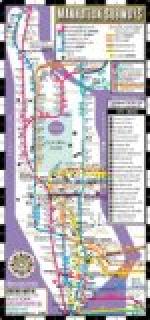The organization of electrical conductors provided to convey direct current from the sub-stations to the moving trains can be described most conveniently by beginning with the contact, or so-called third rail. South of 96th Street the average distance between sub-stations approximates 12,000 feet, and north of 96th Street the average distance is about 15,000 feet. Each track, of course, is provided with a contact rail. There are four tracks and consequently four contact rails from City Hall to 96th Street, three from 96th Street to 145th Street on the West Side, two from 145th Street to Dyckman Street, and three from Dyckman Street to the northern terminal of the West Side extension of the system. From 96th Street, the East Side has two tracks and two contact rails to Mott Avenue, and from that point to the terminal at 182d Street three tracks and three contact rails.
[Illustration: CONTACT SHOE AND FUSE]
Contact rails south of Reade Street are supplied from sub-station No. 11; from Reade Street to 19th Street they are supplied from sub-stations Nos. 11 and 12; from 19th Street they are supplied from sub-stations Nos. 12 and 13; from the point last named to 96th Street they are supplied from sub-stations Nos. 13 and 14; from 96th Street to 143d Street, on the West Side, they are supplied from sub-stations Nos. 14 and 15; from 143d Street to Dyckman Street they are supplied from sub-stations Nos. 15 and 17; and from that point to the terminal they are supplied from sub-station No. 17. On the East Side branch contact rails from 96th Street to 132d Street are supplied from sub-stations Nos. 14 and 16; from 132d to 165th Street they are supplied from sub-stations Nos. 16 and 18; and from 165th Street to 182d Street they are supplied from sub-station No. 18.
Each contact rail is insulated from all contact rails belonging to adjacent tracks. This is done in order that in case of derailment or other accident necessitating interruption of service on a given track, trains may be operated upon the other tracks having their separate and independent channels of electrical supply. To make this clear, we may consider that section of the subway which lies between Reade Street and 19th Street. This section is equipped with four tracks, and the contact rail for each track, together with the direct current feeders which supply it from sub-stations Nos. 11 and 12, are electrically insulated from all other circuits. Of each pair of track rails one is used for the automatic block signaling system, and, therefore, is not used as a part of the negative or return side of the direct current system. The other four track rails, however, are bonded, and together with the negative feeders constitute the track return or negative side of the direct current system.




